1. Coronavirus Pandemic (COVID-19)
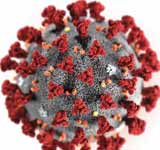
Coronavirus disease 2019 (COVID-19) - The coronavirus Wuhan, also called novel coronavirus (2019-nCoV) or corona virus seafood market in Wuhan is a virus belonging to the family of coronaviruses. Its genetic code is formed by a single strand of RNA, so it is classified as single stranded positive RNA. It can cause acute respiratory disease and severe pneumonia in humans. It was first detected in December 2019. Its genetic sequence has been isolated from a sample obtained from a patient affected by pneumonia in the city of Wuhan (China). The exact transmission mechanism is known, but it is believed that transmission from one person to another can be produced by saliva droplets expelled by coughing and sneezing. There is currently no specific officially approved treatment, but existing antiviral can be used. On December 31, 2019, Wuhan City health authorities reported the appearance of 27 people diagnosed with Severe Acute Respiratory Syndrome of unknown origin, most of the cases were related to a certain market of seafood and other animals located in the city. On January 7, 2020 it was discovered that the cause of the disease was a new virus from the coronavirus family that was named as 2019-nCoV (Wuhan corona virus). On January 13, 2020 a case was detected in Thailand confirmed by laboratory tests, on January 14 a case was detected in Japan of a person who had recently traveled to Wuhan. On January 21, 2020, there were reports of cases in the United States also in people who had traveled to Wuhan.
2. Dengue fever
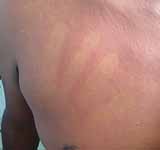
The dengue is an infectious disease caused by the virus dengue, of the genus flavivirus which is transmitted by mosquitoes, mainly by the Aedes aegypti. There are 4 types of dengue virus. The infection causes flu symptoms, and sometimes evolves into a life-threatening condition, called severe dengue or hemorrhagic dengue. It is a widespread infection that occurs in all regions of the planet's tropical climate. In recent years, transmission has increased predominantly in urban areas and has become a major public health problem. Currently, more than half of the world's population is at risk of contracting the disease. Dengue prevention and control depend exclusively on effective measures to combat the transmitter vector, the mosquito. The number of dengue cases increased dramatically has since the 1960s, with between 50 and 528 million people infected annually. The first descriptions date back to 1779 and its viral cause and the transmission were understood at the beginning of the twentieth century. Dengue has become a worldwide problem since World War II and is endemic in more than 110 countries. Apart from the elimination of mosquitoes, they are working on a vaccine against dengue, as well as medication directed directly to the virus.
3. Epidemic typhus

The epidemic typhus (also Brill-Zinsser Disease), a green louse disease, is a form of typhus, named after the disease often causes epidemics after wars and natural disasters. The causative agent is the bacterium Rickettsia prowazecki, transmitted by the louse of the human body (Pediculus humanus corporis). Rickettsia will cause vasculitis typical of this genus. By belonging to the group of typhic fevers, the endothelium and the intimate layer of the vessels will be affected. Apart from this vasculitis there will be an endotoxemia. The clinical picture debuts sharply after an incubation period of one to two weeks after the inoculation of the bacteria. At first it is a pseudo-flu picture with headache, high fever, chills, arthralgias and myalgias, prostration. The tetracyclines or chloramphenicol orally in an initial high dose of 2 or 3 grams, followed by daily doses of 1 or 2 grams per day in four shots a day, always up after day the end of the fever is useful. A single dose of 5 milligrams of doxyclin per kg of weight is also curative. In case of very serious illness with suspected typhus, treatment should be started without waiting for laboratory confirmation. Patients are usually isolated for at least 15 days to avoid contagion, since typhus is very contagious. In addition the clothes and sheets are constantly washed to end the possible transmitter lice.
4. Hand, foot and mouth disease
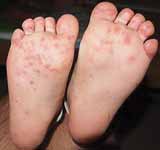
The human mouth disease (also known as HFMD hand, foot and mouth or HFMD for short) is a mild illness viral, whose main symptoms are pain in the mouth and the presence of small blisters, ulcers or sores. The two types of viruses that cause it are Coxsackie virus and Enterovirus. It should not be confused with the other foot-and- mouth disease or glossopeda, which is a condition of cattle and is probably much better known to the public. It especially attacks children who begin to walk, although it can appear at any age. This occurs particularly in hot weather, usually in the summer or early fall. Women pregnant should avoid exposure to FMD because it can cause more severe viral infection in the child not yet born, and with it, possible birth defects. However the risk is small. There is no specific treatment for the disease of the hands, feet and mouth. Individual symptoms, such as fever or blister pain (skin) can be relieved by the use of medications, although most blisters disappear without ulceration, rupture or scarring. Foot and mouth disease is a viral disease that has to run its course. Many doctors do not prescribe medication, unless the infection. Be severe it is usually recommended that the affected child be allowed to rest at home until the infection subsides. Fever reducers will help control high temperatures. Warm baths also serve to lower the temperature. The only recommended medication is paracetamol.
5. Plague
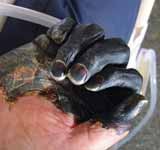
The plague is an infectious disease that affects both animals and humans. It is caused by the bacterium Yersinia pestis. It is one of the most aggressive bacterial diseases, often causing the death of the affected person if proper antibiotic treatment is not established. It is usually transmitted by bites of infected fleas from rodents, causing buboes in English and armpits, a clinical picture known as bubonic plague. If the transmission takes place by respiratory route, a particular form of the disease known as pneumonic plague occurs. The great plague epidemic that affected Europe in the mid-fourteenth century is sometimes referred to as black plague. It is estimated that over 200 million people have died of plague throughout history, thus becoming one of the most lethal infectious diseases. In general terms it is considered that there have been three major pandemics of the disease: the Justinian plague that developed between the sixth and eighth centuries, the second pandemic that has been called the black plague produced successive outbreaks in Europe between the fourteenth and eighteenth centuries and the third plague pandemic, which emerged in China during the 19th century.
6. Cholera

The Cholera is a contagious disease acute intestinal, caused by the serotypes O1 and O139 the bacteria Vibrio cholerae, which produces a secretory diarrhea characterized by profuse watery stools, pale milky, like water washing rice, containing high sodium, bicarbonate and potassium, and a small amount of protein. In its severe form, it is characterized by a large-volume aqueous diarrhea that quickly leads to dehydration of the organism. The Middle East and the countries of the Persian Gulf were affected since 1819, appearing in the city of Aleppo, in Syria then, in 1821, he entered Oman by Muscat, and then to Iraq by Basra, also affecting the island of Bahrain. In Baghdad it caused a great death among the Syrian army, which was attacking the city at that time. The subsequent advance of said army northward brought the disease to Tbilisi (in present-day Georgia) and Astrakhan in Russia between 1822 and 1823. He arrived in Turkey through the city of Alexandretta in 1823. The disease was discovered by Filippo Pacini in 1854, and later Jaume Ferran and Clua developed the first vaccine. The infection is usually benign or asymptomatic, but sometimes it can be serious. Approximately one in 20 people infected can have the disease in serious condition, characterized by profuse watery diarrhea, vomiting and numbness of the legs. In these people, the rapid loss of body fluids leads to dehydration and prostration. Without proper treatment, death can occur within a few hours.
7. HIV/AIDS

Human immunodeficiency virus infection and acquired immune deficiency syndrome (HIV/AIDS) are a spectrum of diseases caused by infection caused by Human immunodeficiency virus (HIV). After initial infection, a person may not notice any symptoms or may experience a brief period of influenza type box. Typically, a prolonged period without symptoms follows. As the infection progresses, it interferes more with the immune system, increasing the risk of common infections such as tuberculosis, in addition to other opportunistic infections and tumors that rarely affect people with an unscathed immune system. These delayed symptoms of infection are known as AIDS, stage often is also associated with weight loss. Although doctors knew both pneumonia by Pneumocystis carinii as Kaposi's sarcoma, the joint appearance of both in several patients got their attention. The majority of these patients were sexually active homosexual men, many of whom also suffered from other chronic diseases that were later identified as opportunistic infections. Blood tests on these patients showed that they lacked the adequate number of a type of blood cell called CD4 + T. Most of these patients died within a few months.
8. Hepatitis A

The hepatitis A (viral hepatitis, infectious hepatitis) is the infectious disease most commonly occurs hepatitis (literally "inflammation of the liver") acute in the world. It is caused by the hepatitis A virus (HAV), whose natural reservoir is only human. Hepatitis A cannot be chronic and does not cause permanent damage to the liver. Following an infection, the immune system produces antibodies against the hepatitis A virus and gives the subject immunity against future infections. Transmission occurs through contaminated food or water, and in some countries it can be imported when traveling to high-risk areas. The hepatitis A vaccine is, to date, the best protection against the disease. In ancient times cases of jaundice were described that may correspond to the manifestation of some type of viral hepatitis. In the eighth century, the need to keep patients of this type isolated was felt. At the end of the 19th century, in 1885, parenteral transmission of the disease was described, which was later distinguished from the disease that was transmitted by the oral fecal route. In 1973, Purcell managed to isolate and identify the infectious hepatitis virus or virus A, and distinguished it from the hepatitis B virus, discovered in 1963 by Baruch Blumberg.
9. Bubonic plague
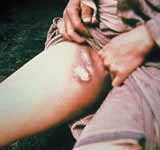
The bubonic plague, or Black Death is an infection caused by the bacterium Yersinia pestis which is dominated inflammation of lymph infected sexual organs and eyes (buboes). When pulmonary involvement predominates, the disease is called pneumonic plague. The first symptoms are similar to those of the flu and occur one to seven days after exposure to the bacteria. These symptoms include fever, headache and vomiting. Swollen and painful lymph nodes occur in the areas closest to the area where the bacteria entered the body. Due to the swelling of the lymph nodes it is possible that they can open and expel purulent material outside. Bubonic plague is spread mainly by the bite of infected fleas that inhabit rodents. It can also be spread by exposure to the body fluids of an animal infected with plague. In the form of bubonic plague, bacteria enter the skin due to flea bites. Once inside the body, bacteria travel through the lymph vessels to the swollen lymph nodes. The diagnosis is made by finding the bacteria in the blood, sputum or lymph node fluid. This disease is endemic in Mongolia. Prevention is carried out through public health measures, for example, by eradicating rodents from cities and inhabited places. There are several antibiotics that are effective for treatment, including streptomycin, gentamicin and doxycycline. If the disease is left untreated, the mortality rate ranges from 30% to 90% of the total of those infected. Death, if it occurs, occurs in about ten days. With proper treatment the risk of death is 10%.
10. Hepatitis B
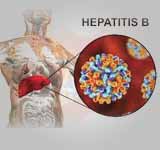
The hepatitis B is an infectious disease of the liver caused by hepatitis B, belonging to the family Hepadnaviridae (hepatotropic DNA viruses) and characterized by hepatocellular necrosis and inflammation. It can cause an acute or a chronic process, that can lead to cirrhosis (loss of "architecture" liver by scarring and emergence of nodules regeneration) of liver, liver cancer, liver failure, fatigue, fever, jaundice and even death. The treatment of hepatitis is closely related to the treatment of HIV infection, since the two diseases require extensive knowledge of immunology, virology, genetics and knowledge of current therapeutic standards, which usually change rapidly with modern updates. Of all the types of hepatitis that exist, Hepatitis B is the most dangerous of all followed by Hepatitis C. The first record of an epidemic caused by the hepatitis B virus was made by Lurman in 1885. As a result of an outbreak of smallpox in 1883, 1289 shipyards were vaccinated using lymph from other individuals. After several weeks, and up to eight months later, 191 vaccinated workers became ill with a form of jaundice that was diagnosed as serum hepatitis. Other employees who were inoculated with different batches of human lymph remained healthy. Lurman's publication is considered a classic example of an epidemiological study, concluding that contaminated lymph was the source of the epidemic.
11. Hepatitis E
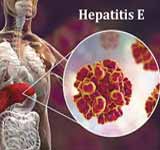
The Hepatitis E is a disease caused by the hepatitis E virus (HEV) and having a transmission fecal-oral. It causes epidemics in India, Asia, Africa and Mexico. Its healing process is spontaneous. The hepatitis E virus was originally classified in the Caliciviridae family, but more recently it has been classified as a Class IV positive sense RNA virus belonging to the genus Herpesvirus, the only member of the Hepeviridae family. Detection of anti-HBV IgM and anti-HEV IgG respectively or by the polymerase reaction, invertase transferase. By exclusion of acute hepatitis A, B, C and D. Serum immunoglobulin does not prevent hepatitis E (commonly used) because it lacks Ac Anti VHE. Special recommendations: Travelers to endemic areas should avoid eating raw or undercooked fruits and vegetables.
12. Japanese encephalitis
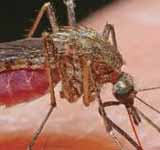
The Japanese encephalitis is a flavovirosis transmitted by mosquitoes that causes severe encephalitis in horses and humans, and cause the pig you litters reduced with mummification and stillbirths, and often congenital encephalitis. To the same group belong the encephalitis of San Luis, that of the Murray Valley, and that of the West Nile. The agent (JEV) belongs to the Flavivirus genus, of which it is a typical representative. Very genetically and antigenically close to the West Nile virus, it has a virion of about 40-50 nm, icosahedral nucleocapsid, and lipoproteic envelope with abundant peplomers. The approximately twenty known variants are grouped into four genotypes. With low resistance outside hosts and vectors, it is hemagglutinating and easily cultivated in chicken embryo and in BHK cell lines and of porcine origin, with cytopathic effect. Encephalitic lesions are usually quite wide areas of cortical necrosis with neuronolysis and neuronophagy and intense mononuclear infiltration with some hemorrhages. In affected swine litters fetal mummification is usually observed, but stillbirths and malformations may show hydrocephalus, cerebellar hypoplasia and spinal demyelination.
13. Leishmaniasis
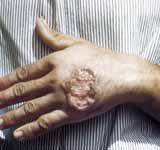
The leishmaniasis is a set of diseases zoonotic and anthroponotic caused by protozoa of the genus Leishmania. The clinical manifestations of the disease range from cutaneous ulcers that heal spontaneously, to fatal forms in which severe inflammation of the liver and spleen occurs. It is a zoonotic disease that affects both dogs and humans. However, wild animals such as hares, possums, coatis and jurumíes, among others, are asymptomatic carriers of the parasite, so they are considered reservoir animals. The agent is transmitted to humans and other animals through the bite of female sandflies, a group of blood-sucking insects belonging to the Phlebotomus genera of the Old World, (Europe, Africa and Asia) and Lutzomyia in America, from the Psychodidae family. In Colombia, in certain regions, known as palomilla, in Ecuador arenilla, in Argentina torito, nib or carachai. Globally, around 350,000,000 people are considered to be at risk of becoming infected and sick. Each year, an estimated 1,500,000 to 2,000,000 children and adults develop symptoms of the disease (cutaneous and mucocutaneous form 1,000,000 to 1,500,000 visceral form 500,000), and the incidence of infection is higher when other infections occur. Leishmaniasis is associated with about 2,400,000 people with disabilities and about 70,000 deaths per year.
14. Malaria
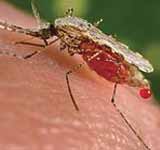
The malaria is a disease caused by parasites of the genus Plasmodium, and some scientific studies suggest that it could have been transmitted to humans through western gorillas. It is the first disease of importance among debilitating diseases. Between 700,000 and 2,700,000 people die each year from malaria, of which more than 75% are children in endemic areas of Africa. Approximately also causes 400 to 900 million acute cases of fever in a year (under five years) child population in those areas. In May 2007, the World Health Assembly decided to commemorate April 25 on World Malaria Day. The first attempt at a synthetic vaccine against malaria was made in 1997 by Manuel Elkin Patarroyo's team. The results were uneven, reaching a maximum efficiency of 28% in South America. In 2010, the vaccine was listed as "inactive" by the World Health Organization. In 2018 there were 228 million cases of malaria worldwide resulting in an estimated 405,000 deaths. Most of the disease burden is recorded in Africa, south of the Sahara. Around 40% of the world's population lives in areas affected by malaria, mainly in the poorest countries. Insecticide treated bed nets (MTI) prevent this disease effectively. However, certain obstacles have been identified in terms of increased use.
15. Measles
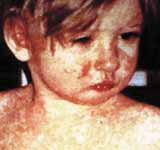
The Measles is an infectious disease exanthematic as rubella or chickenpox, quite common, especially in children, caused by a virus, specifically family Paramyxoviridae of the genus Morbillivirus. It is characterized by the typical red spots on the skin (rash), as well as fever and a general weakened state. If complications occur, measles can cause inflammation in the lungs and brain that threaten the patient's life. The measles incubation period usually lasts 4 to 12 days, during which there are no symptoms. Infected people remain contagious from the onset of the first symptoms until 3 to 5 days after the onset of the rash. The diagnosis is made through the clinical picture and the detection of antibodies in the blood. There is no specific therapy for the treatment of the disease; however, it can be prevented by administering the measles vaccine. In the past, the triple viral vaccine (also known as SPR) has reduced the number of infections. In most countries, the disease is a mandatory declaration to social health authorities. In 1998, the World Health Assembly established the goal of eliminating measles endemic in the European Region in 2007, to certify their elimination by 2010.
16. Meningitis

The meningitis is an infection characterized by inflammation of the meninges (leptomeninges) in 80% of cases are caused by viruses, in 15 to 20% it is by bacteria and in other cases is due to poisonings, fungi, medications and other diseases. It is a rare but potentially lethal condition that can injure the brain and cause unconsciousness and injury to other organs. Meningitis progresses very quickly so early diagnosis and early treatment are important to prevent serious sequelae and prevent death. Population studies have shown that viral meningitis is more common (affects 10.9 people per 100,000) and occurs more frequently in summer. In Brazil, the rate of bacterial meningitis is higher (affects 45.8 people per 100,000 per year). The Sub - Saharan Africa has been plagued by large epidemics of meningococcal meningitis for over a century, which caused it will be referred to the "meningitis belt". Typically, epidemics occur in the dry season (from December to June) and an epidemic wave lasts two or three years, with interruptions during the intermediate rainy seasons. In that area, medical attention is scarce and there are attack rates of one hundred to eight hundred cases per hundred thousand, mostly caused by meningococci. The largest epidemic recorded in history devastated the entire region in the period 1996-1997 and caused more than 250,000 cases and twenty-five thousand deaths.
17. Mumps

The Mumps virus, popularly called mumps, is a contagious disease that can be acute or chronic, localized primarily in one or both parotid glands, salivary glands which are located behind the ascending branches of the jaw. It is caused by a virus of the Paramyxoviridae, which cause a disease most often in children and adolescents, but can also cause infections in adults sensitive. Usually, the disease produces lifelong immunity, so it can be prevented by administering a vaccine, the triple viral vaccine (SPR). There is no treatment that is effective to cure the disease. It is based solely on the improvement of symptoms, until the natural history of the disease is fulfilled. Among the general measures, it is necessary to isolate the patient, to avoid a higher incidence of cases, rest during the febrile period and to provide the affected person with medications to reduce the symptoms. For example, the application of hot or cold packs in the neck area and the use of acetaminophen can help relieve pain. Aspirin should not be given to children with viral disease due to the risk of Reye's syndrome.
18. Nipah virus infection
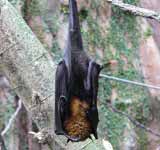
The Nipah virus is the infectious agent which causes infection in humans with the Nipah virus, a serious respiratory and neurological disease with a fatality rate varying from 40% to 75% depending on the epidemic. It is a mononegavirus, that is to say a virus with single - stranded RNA of negative polarity (group V of the Baltimore classification) and with non-segmented genome, belonging to the family of Paramyxoviridae, genus Henipavirus. Its natural reservoir is the dogfish, especially the species found in Oceania, Southeast Asia, South Asia and sub-Saharan Africa. Nipah virus is surrounded by a viral envelope formed of a lipid bilayer overlying matrix proteins denoted M. The surface of the virus has glycoproteins G ensuring adhesion (attachment in English) of the virus on the host cell, in particular on ephrine B2, a highly conserved protein present in many mammals, and trimers of F proteins ensuring the fusion of the viral membrane with the host cell plasma membrane, a collateral effect being the formation in large syncytia resulting from the fusion of several neighboring host cells under the effect of this viral protein, the three-dimensional structure of the attachment protein G was established by X-ray crystallography. The interior of the virus consists of a RNA virus and a protein N of nucleocapsid complexed with protein L functioning as enzyme type RNA-dependent RNA polymerase itself linked to a phospho protein P essential for the enzymatic activity of protein L.
19. Polio

The polio, called shorthand polio, (referring to the spinal cord) or infantile paralysis, is an infectious disease that primarily affects the nervous system. The disease is caused by the poliovirus. It is called infantile because the people who get the disease are mainly children. It is transmitted from person to person through respiratory secretions or by the oral fecal route. Most polio infections are asymptomatic. Only in 1% of cases, the virus enters the central nervous system (CNS) via the bloodstream. Within the CNS, the poliovirus preferentially infects and destroys motor neurons, which causes muscle weakness and acute flaccid paralysis. Polio is more likely to occur in children aged four to fifteen in temperate climates, in warm summer and winter a bit cold. It is a very infectious disease, but it is fought with vaccination. The disease affects the central nervous system. In its acute form it causes inflammation in the motor neurons of the spinal cord and brain and leads to paralysis, muscular atrophy and very often deformity. In the worst case it can cause permanent paralysis or death when the diaphragm is paralyzed.
20. Relapsing fever
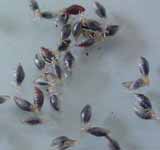
The relapsing fever or fever recurrent epidemic is a infectious disease that manifests as an increase in body temperature recurring. It can be caused by microorganisms of the genus Rickettsia or by spirochetes of the genus Borrelia that are transmitted to man by the bites of hematophagous parasites: insects, such as lice, and mites such as ticks, particularly those of the genus Ornithodoros. Borrelia recurrentis, one of the pathogenic microorganisms that the human louse, Pediculus humanus humanus can transmit, is the cause of one of the forms of recurrent fever. Recurrent epidemic fever transmitted by lice is more severe than that transmitted by ticks. It appears in the form of epidemic outbreaks in poor living conditions, famine and during wars. The mortality rate is 1% with treatment and between 30-70% without treatment. The signs of poor prognosis are severe jaundice, changes in mental status, hemorrhages, and a prolonged QT interval on the electrocardiogram. Head lice that feed on infected humans acquire the pathogen, which multiplies in their stomach. If it subsequently bites another person, Borrellia can enter the victim's body if it crushes the louse or scratches the area in which it is feeding. B. recurrentis first infects the mucous membranes and from there invades the blood flow. The human being is his only animal reservoir.
21. SARS coronavirus
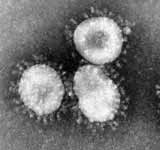
The virus SARS-CoV is a coronavirus that caused the epidemic of the respiratory syndrome severe acute (SARS) that began in 2003 in the countries of Southeast Asia. It emerged in November 2002 in the province of Canton, China. Since its emergence in August 2003, the virus had infected 8,422 people in about thirty countries causing 916 deaths.
22. Salmonella enterica

Salmonella enterica is a bacterial species belonging to the genus Salmonella consisting of facultative anaerobic intracellular gram - negative bacilli withperitric flagella. It constitutes an important group of pathogens for animals and humans. There are six subspecies: enterica, arizonae, diarizonae, houtenae, indica and salamae. These subspecies, according to the pathogenic and antigenic characteristics are divided into more than 2600 serotypes. The Salmonella enterica subsp. Enterica is divided into typhoid and non-typhoid serotypes. This bacterium could be the cause of the "cocoliztli epidemic of 1576" that killed 80% of the Aztec population.
23. Smallpox
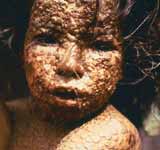
The Smallpox was an infectious disease, contagious, severe caused by the Variola virus which in some cases could be fatal. It is considered eradicated since 1980. It has no specific treatment and the only forms of prevention are inoculation or vaccination. The name smallpox comes from the Latin variŭs (varied), and refers to the bulges that occur on the face and body of an infected person. Smallpox, together with rinderpest are the only two diseases that have been eradicated from nature by humans. In 1978, and due to an accident of bad manipulation of the virus in a laboratory in Great Britain, the medical photographer Janet Parker contracted the virus and died on September 11 of that year, meaning the last human death recorded by this virus in the world. With regard to the eradication of the disease, there is an effect that does not make it desirable to keep samples of the virus: humanity has not only lost immunity to the virus, but also has no genetic memory. In the event of an eventual escape or - mainly - even in a biological attack, the reaction time of the industry and the consequent worldwide vaccination would not be fast enough to prevent the death of hundreds of millions of people.
24. Trypanosomiasis
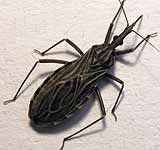
Trypanosomiasis is the state of being infected with trypanosomes, a genus of single-celled eukaryotic Protozoa that can cause diseases in humans and animals. They are usually transmitted by insects (vectors). All trypanosomes are obligate parasites, primarily from insects; some can also survive in vertebrate animals.
25. Yellow fever
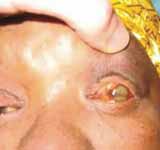
The yellow fever or black vomiting (also called American pest) is an infectious disease zoonotic viral acute caused by virus yellow fever transmitted by mosquitoes of the genus Aedes and Haemagogus. It is endemic in subtropical and tropical areas of South America and Africa. Its clinical presentation is varied, ranging from a mild and self-limited febrile illness (most frequent) to a diseasesevere hemorrhagic and hepatic (with 50% lethality). The yellow word of the name refers to the signs of jaundice that affects severely ill patients. There is an effective vaccine but there is no known cure, so when unvaccinated people get it, they can only be given symptomatic treatment. At the beginning of 2016, an epidemic of yellow fever broke out in Angola. Between January and August 4,000 suspicious cases have been counted, of which 879 have been confirmed. From Angola the outbreak passed to the neighboring Democratic Republic of the Congo, where 68 cases have been confirmed and there are more than 2,200 suspect cases. There are already 400 confirmed deaths between both countries, the majority in Angola.
26. Zika virus

The virus Zika (ZIKV) is a virus of the genus Flavivirus of the family Flaviviridae, group IV of the order not rated which is transmitted by the bite of mosquito vectors of the genus Aedes. In humans, Zika fever or Zika disease occurs, which has been known since the 1950s as coming from the equatorial region that spans Africa to Asia. Its name comes from the Zika forest near Entebbe (in Uganda), where first isolated the virus in 1947. The microcephaly is degeneration or malformation of the brain that determines the birth of children with a head size smaller than normal and sometimes causes death at 10 days of life. In December 2015, the European Center for Disease Prevention and Control (ECDC) published a notice about the possible association of Zika virus with congenital microcephaly. The data suggest that in the fetuses of women infected with the virus during the first trimester of pregnancy there is a high risk of microcephaly, other research indicates that in addition to this syndrome this type of vertical transmission could cause brain damage. The most common symptoms of virus infection include mild headaches, efflorescence or maculopapular, fever, malaise rashes, conjunctivitis and joint aches.
27. Chikungunya
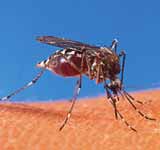
The chikungunya, arthritis epidemic chikungunya or fever chikungunya is a disease caused by the virus type alphavirus of the same name, which is transmitted to humans by the bite of mosquitoes carrying the genus Aedes, both Aedes aegypti and Aedes albopictus. Chikungunya virus (abbreviated: CHIK) is transmitted in a manner similar to that caused by dengue fever and causes a disease with an acute febrile phase that lasts 2 to 5 days, followed by a period of pain in the limb joints. This pain can persist weeks, months or even for years in a percentage that can be around 12% of cases. The best form of prevention is the general control of the mosquito. In addition, avoid infected mosquito bites. To date there is no specific treatment, but there are medications that can be used to reduce symptoms. Rest and fluid intake can also be useful. The disease can appear only once. Then antibodies are developed that will be in charge of protecting sick people and, according to evidence available so far, immunity would be for life.
28. Ebola
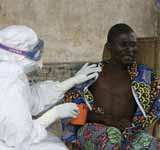
The disease virus Ebola (EVE) or hemorrhagic fever of Ebola (FHE), also known as of the Ebola hemorrhagic or just as Ebola, is a disease caused in humans by the virus Ebola. Symptoms usually begin between two days and three weeks after contracting the virus, with fever, sore throat, muscle aches, and headache. Usually, nausea, vomiting, and diarrhea continue, along with liver failure and renal. At that time, some patients begin to suffer bleeding complications. The virus can be contracted by contact with the blood or body fluids of infected animals (usually monkeys or fruit bats). Airborne transmission in the natural environment has not been documented. It is believed that fruit bats carry the virus and can spread it without being affected. Once a human being is infected, the disease can also be spread among people. Male survivors can transmit the disease through semen for up to a year and a half. In order to establish a diagnosis, other diseases with similar symptoms, such as malaria, are usually ruled out before, cholera and other viral hemorrhagic fevers. In order to confirm this diagnosis, blood tests are done to detect antibodies, RNA, or the virus itself. The mortality rate of the disease is high: with a frequency of deaths of between 50% and 90% of those infected by the virus. The first documented Ebola outbreak occurred in 1976, simultaneously in Zaire and Sudan, where 3418 cases and 2830 deaths were detected with a lethality rate of 83%. This outbreak was caused by the Ebola-Zaire virus, one of the most epidemic and deadly strains in history. Outbreaks of viral hemorrhagic fevers have a mortality rate of between 41 and 89%.
29. Influenza (pandemic, seasonal, zoonotic)
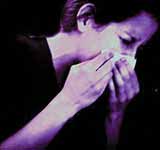
The flu or influenza is an infectious disease caused by influenza A or influenza virus B genres of RNA viruses of the family Orthomyxoviridae. Although in some countries the term influenza or flu is used to refer to the common cold, these terms should not be confused or used equally. The words flu and flu come from the French word grippe (from the Swiss-German grupi) (curl up), while influenza comes from the Italian. The flu can be similar to a cold however, it usually starts suddenly with a high fever, sore throat, weakness, malaise, muscle aches (myalgias), stomach pain, joint pains (arthralgia), headache (headache) and cough, which is usually dry and without mucus. It can also cause, more often in children, nausea, vomiting and diarrhea. This pandemic has been described as the greatest medical holocaust in history, and caused at least as many deaths as the Black Death. This high mortality was due to the high infectivity rate (up to 50% of the exposed population) and the severity of the symptoms caused by the massive production of cytokines (cytokine storm). To this we must add that the first symptoms, in 1918, were attributed to other diseases such as dengue, cholera, or typhoid fever. An observer wrote that one of the worst complications is bleeding from themucous membranes, especially the nasal, stomach or intestinal. Ear bleeding and petechiae are also frequent. Most deaths occurred from bacterial pneumonia, a secondary infection caused by the flu, but the virus also killed, directly, as a result of massive hemorrhages and edema lung.
30. Middle East respiratory syndrome
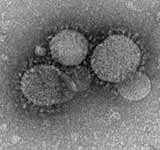
The Middle East respiratory syndrome (MERS) is a recently identified zoonosis caused by the Middle East respiratory syndrome coronavirus. It is an acute respiratory infection with fever, cough and shortness of breath as primary symptoms. Diarrhea and vomiting also occur in some cases. MERS can lead to severe pneumonia and renal failure. The mortality in symptomatic patients is around 30%. The disease occurs in camels and these animals can transmit the disease to humans. Theincubation time is between 2 and 14 days and the patient is probably not contagious during this period. The MERS coronavirus is listed in the Netherlands as a reporting disease within group A for hospital practitioners. The first case of MERS was established in Saudi Arabia in September 2012. On May 15, 2013, 40 cases of MERS worldwide were reported to the World Health Organization, 20 of which were fatal. Researchers estimate infectivity low on the basis of mathematical models. On May 20, 2015, the first case appeared in South Korea. In the period from September 2012 to January 17, 2017, 1879 confirmed MERS infections worldwide were reported to the World Health Organization, of which at least 666 were fatal.
31. vCJD
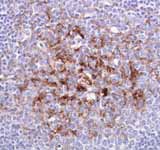
The condition vCJD (abbreviation for variant Creutzfeldt-Jakob Disease) is a form of Creutzfeldt-Jakob disease that is caused by eating meat or (especially) organs of cows suffering from BSE. It has been shown that the pathogen of vCJD corresponds to that of BSE (a prion). To date, around 200 cases have been reported worldwide, most of them (176) in Great Britain, where the only 'major' BSE epidemic has raged. The disease is fatal within 2 years. The variant was first established in 1996 in Great Britain. Because not everything is known about the incubation period, it is difficult to predict how many cases of vCJD will occur in the future. Originally, estimates range from 250 cases to 400,000 and more. The number of certain new cases in England, however, fell to 0 or 1 per year after 2012, after having been more or less constant for around six years per year, around twenty per year. All but one were homozygous for the amino acid Methionine at position 129 of their prion gene. Heterozygotes and homozygotes for Valine at that site are apparently protected against infection or have a longer incubation period. The current analyzes (2016) indicate that the peak incidence has passed in around 2000 and that very few new cases are occurring sporadically. CJD and vCJD can only be definitively established after the patient's death based on brain testing. The diagnosis cannot be made by examining blood. The diagnosis is difficult: the average duration from the onset of symptoms to diagnosis is eleven months, the average duration between the onset of symptoms and death is only 13.5 months.
